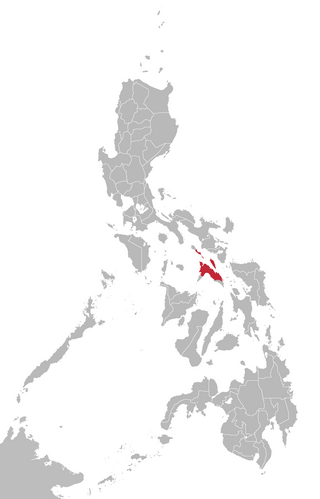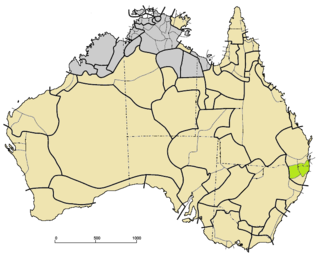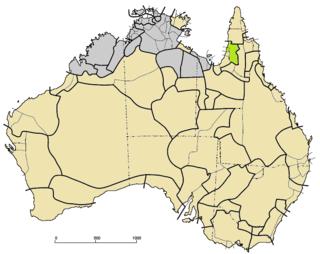
Makassarese, sometimes called Makasar, Makassar, or Macassar, is a language of the Makassarese people, spoken in South Sulawesi province of Indonesia. It is a member of the South Sulawesi group of the Austronesian language family, and thus closely related to, among others, Buginese, also known as Bugis. The areas where Makassarese is spoken include the Gowa, Sinjai, Maros, Takalar, Jeneponto, Bantaeng, Pangkajene and Islands, Bulukumba, and Selayar Islands Regencies, and Makassar. Within the Austronesian language family, Makassarese is part of the South Sulawesi language group, although its vocabulary is considered divergent compared to its closest relatives. In 2000, Makassarese had approximately 2.1 million native speakers.
Comorian is the name given to a group of four Bantu languages spoken in the Comoro Islands, an archipelago in the southwestern Indian Ocean between Mozambique and Madagascar. It is named as one of the official languages of the Union of the Comoros in the Comorian constitution. Shimaore, one of the languages, is spoken on the disputed island of Mayotte, a French department claimed by Comoros.

Kalau Lagau Ya, Kalaw Lagaw Ya, Kala Lagaw Ya, or the Western Torres Strait language is the language indigenous to the central and western Torres Strait Islands, Queensland, Australia. On some islands, it has now largely been replaced by Torres Strait Creole.

Masbateño or Minasbate is a member of Central Philippine languages and of the Bisayan subgroup of the Austronesian language family spoken by more than 724,000 people in the province of Masbate and some parts of Sorsogon in the Philippines. Masbatenyo is the name used by the speakers of the language and for themselves, although the term Minásbate is sometimes also used to distinguish the language from the people. It has 350,000 speakers as of 2002, with 50,000 who speak it as their first language. About 250,000 speakers use it as their second language.
The Achumawi language is the indigenous language spoken by the Pit River people in the northeast corner of present-day California. The term Achumawi is an anglicization of the name of the Fall River band, ajúmmááwí, from ajúmmá "river". Originally there were nine bands, with dialect differences primarily between upriver and downriver, demarcated by the Big Valley mountains east of the Fall River valley.

Yugambeh–Bundjalung, also known as Bandjalangic, is a branch of the Pama–Nyungan language family, that is spoken in north-eastern New South Wales and South-East Queensland.
Initial dropping is a sound change whereby the first consonants of words are dropped. Additionally, stress may shift from the first to the second syllable, and the first vowel may be shortened, reduced, or dropped, which can mean the loss of the entire first syllable of a word. These changes have occurred independently in several Australian Aboriginal language groups.

Saaroa or Lhaʼalua is a Southern Tsouic language spoken by the Saaroa (Hla'alua) people, an indigenous people of Taiwan. It is a Formosan language of the Austronesian family.

Wagiman, also spelt Wageman, Wakiman, Wogeman, and other variants, is a near-extinct Aboriginal Australian language spoken by a small number of Wagiman people in and around Pine Creek, in the Katherine Region of the Northern Territory.

Lardil, also spelled Leerdil or Leertil, is a moribund language spoken by the Lardil people on Mornington Island (Kunhanha), in the Wellesley Islands of Queensland in northern Australia. Lardil is unusual among Aboriginal Australian languages in that it features a ceremonial register, called Damin. Damin is regarded by Lardil-speakers as a separate language and has the only phonological system outside Africa to use click consonants.

The Naʼvi language is a fictional constructed language originally made for the 2009 film Avatar. In the film franchise, the language is spoken by the Naʼvi, a race of sapient humanoids indigenous to the extraterrestrial moon Pandora. The language was created by Paul Frommer, a professor at the USC Marshall School of Business with a doctorate in linguistics. Naʼvi was designed to fit moviemaker James Cameron's conception of what the language should sound like in the film. It had to be realistically learnable by the fictional human characters of the film and pronounceable by the actors, but also not closely resemble any single human language.
Kuuk Thaayorre (Thayore) is a Paman language spoken in the settlement Pormpuraaw on the western part of the Cape York Peninsula, Queensland in Australia by the Thaayorre people. As of 2006, 250 of the 350 ethnic Thaayorre spoke the language. It is in a robust position compared to many indigenous Australian languages, as it is still being acquired by children and used in daily interaction.

The Southwestern Paman languages are a family of the Paman languages spoken on the western part of the Cape York Peninsula of Queensland, Australia.
The Thaayorre, or Kuuk Thaayore, are an Australian people living on the southwestern part of the Cape York Peninsula, Queensland in Australia, primarily in the settlement Pormpuraaw, having its foundation in the Edward River Mission.
The Uw Oykangand, otherwise known as the Kwantari, are an Aboriginal Australian people living on the southwestern part of the Cape York Peninsula, in the state of Queensland in Australia. Their neighbours to the northwest are the Yir-Yoront people. Their traditional lands are around the Alice River and the Crosbie River, and further west around the Mitchell River and into Gulf Country.
Jingulu, also spelt Djingili, is an Australian language spoken by the Jingili people in the Northern Territory of Australia, historically around the township of Elliot. The language is an isolate branch of the Mirndi languages.
Djinang is an Australian Aboriginal language, one of the family of Yolŋu languages which are spoken in the north-east Arnhem Land region of the Northern Territory.
Bilingara, also known as the Bilinarra, is an Australian Aboriginal language spoken by the Bilinarra people of the Northern Territory.
The Ajabakan were an indigenous Australian people of the Cape York Peninsula of Queensland.
The Ngundjan (Ogh-Undjan) were an indigenous Australian people of the state of Queensland.









